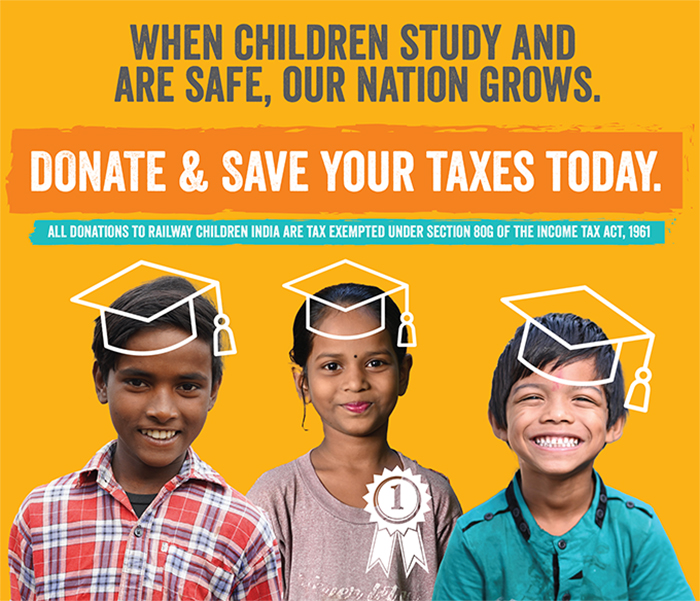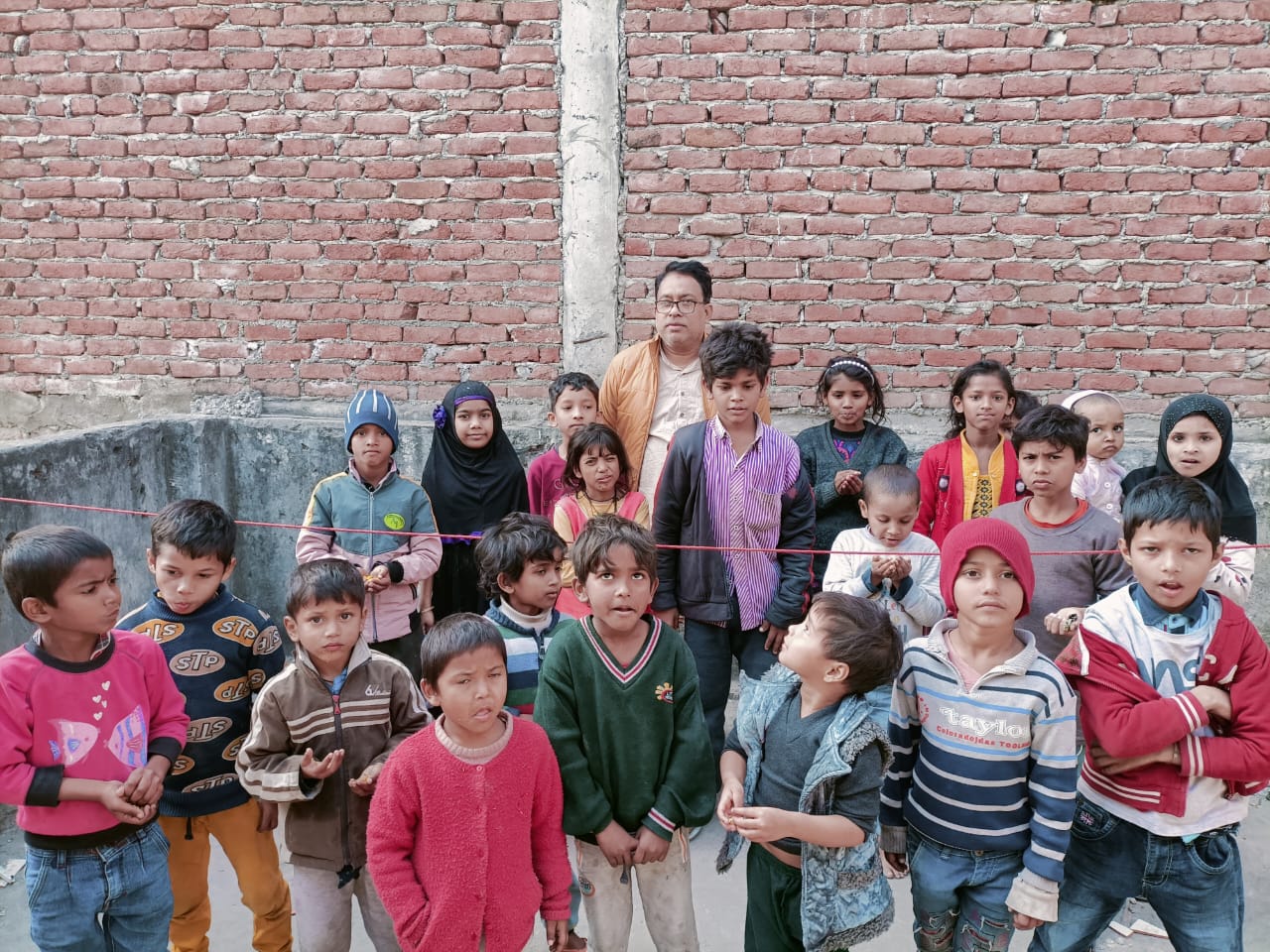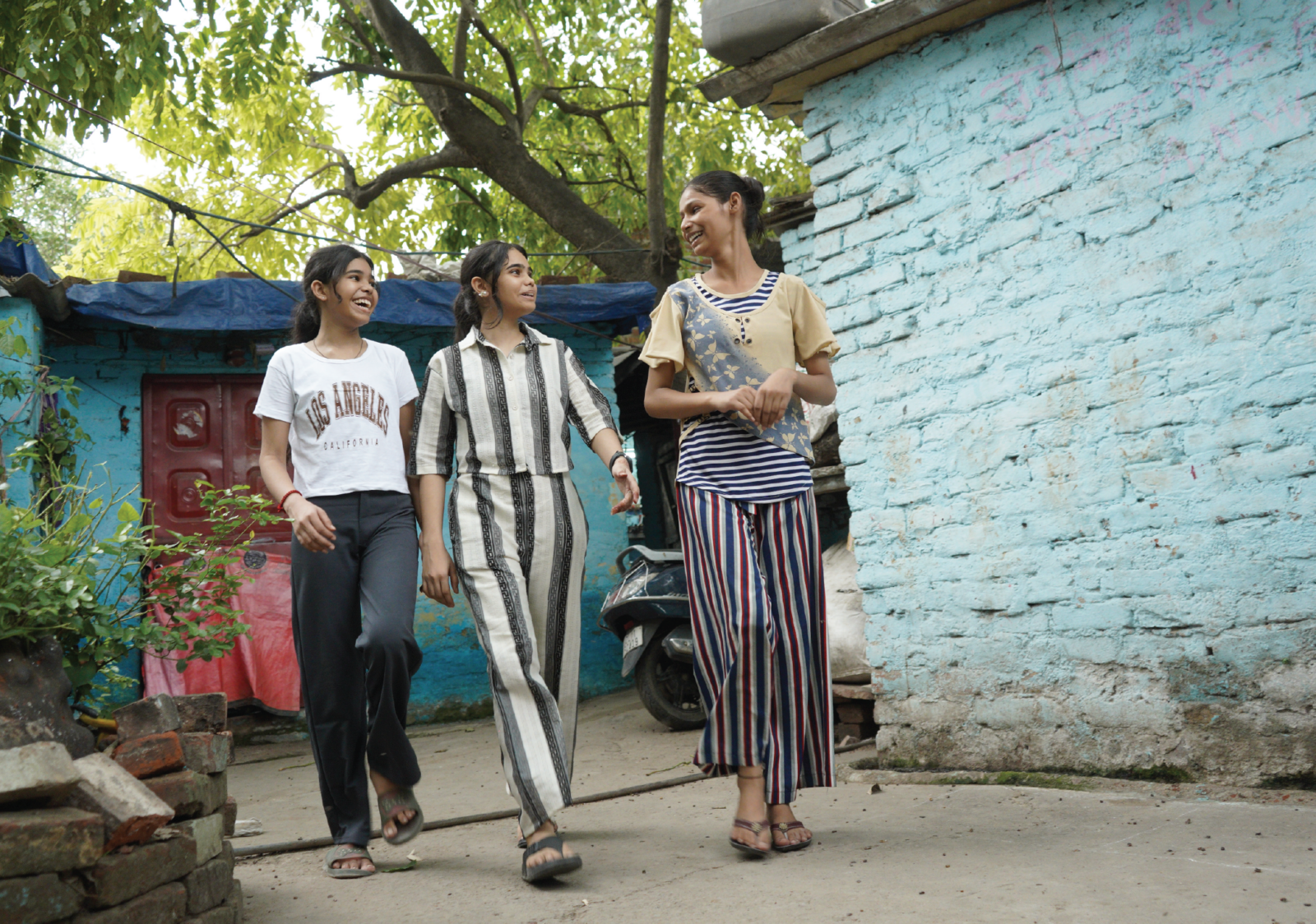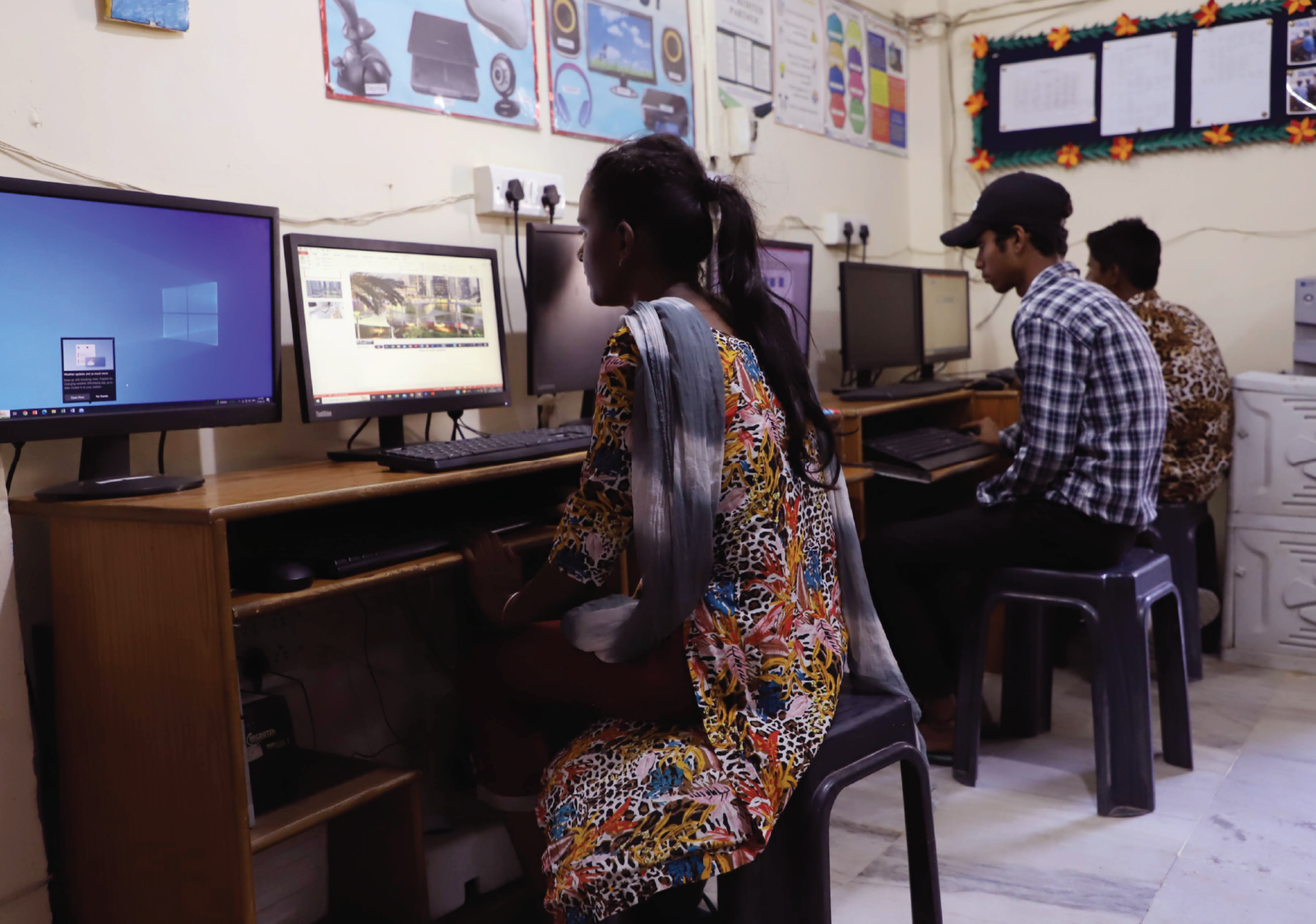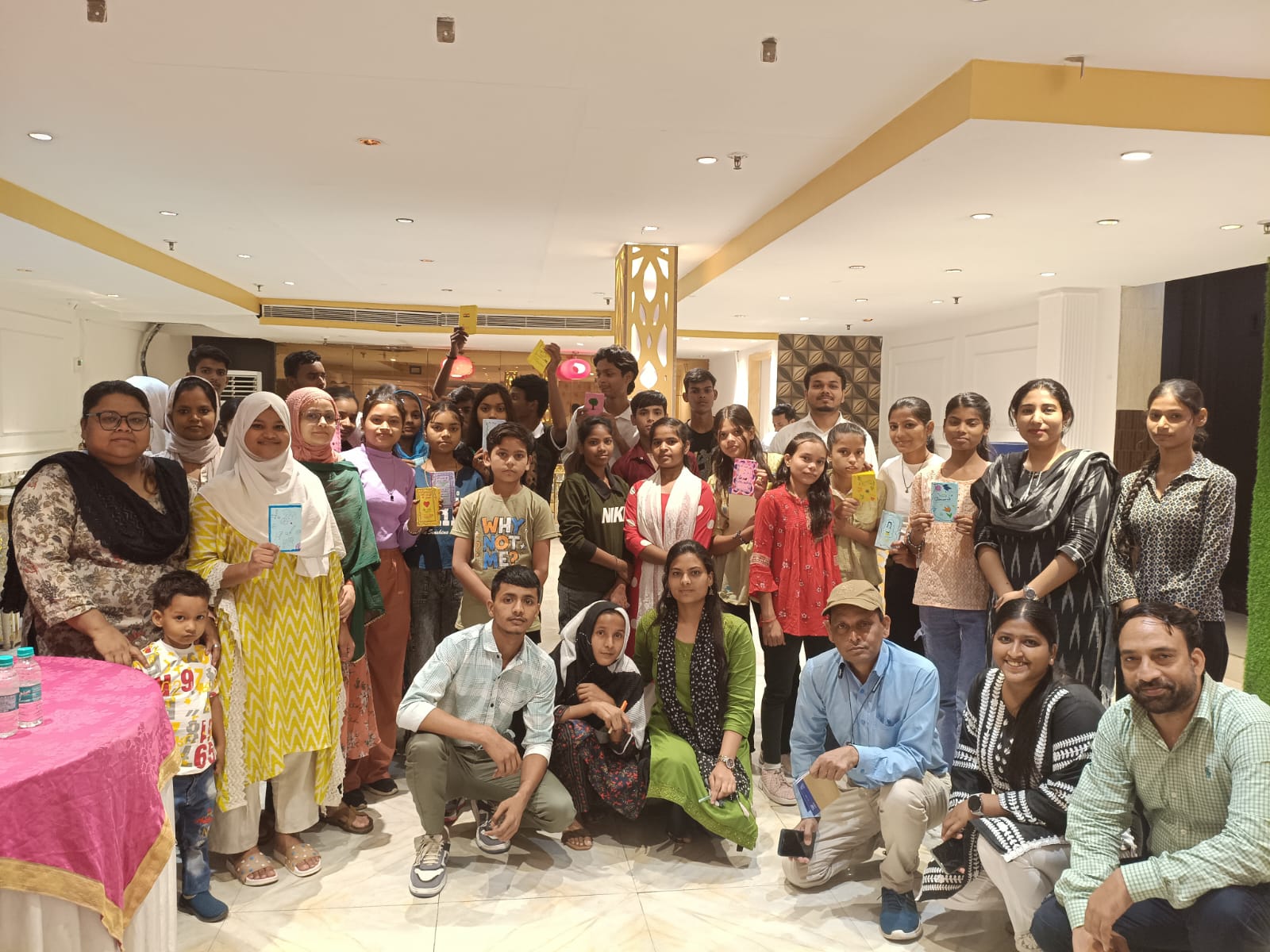Afsar Khan, Programme Manager spends Saturday evenings with children in his community spreading awareness on their rights
Going beyond harrowing images and videos of children engaged in tough labour is a sea of untouched facts and factors that push children and parents into the realm of child labour. The consequences of these situations, the solutions and the available mechanisms comprise finer nuances of the issue that remain far away from the common knowledge of people.
Taking us on a tour of these realities and facts is Afsar Khan aka Khan Sahab, Programme Manager, and a veteran at Railway Children India. Backed with unmatched experience of over two decades, and his infectious passion, Afsarji shares a host of hard-hitting stories and introduces readers to the many unknown, unexplored facets that fuel the menace of child labour, in this insightful interview. Read on.
Q1. Please tell us about your time working with RCI, your experience over the years, and your motivation behind working for children.
My association with RCI goes back to 2004, when I had collaborated with the organization for a short-term project. Thereafter, I formally joined the organization in 2011. This association of close to 20 years has been phenomenal, with me having witnessed a revolution in catalyzing transport hubs for the safety of children.
Prior to RCI beginning work at the stations, there was barely an acknowledgement of the fact that 80% to 90% abandoned and trafficked children use the transport hub. Today, RCI is not only actively working towards the safeguarding of children and communities in these hubs but also supporting close to 20 other organizations.
We see an active mechanism at play at railway stations today. The issue of unsafe environment and predators on the lose at stations is also common knowledge now; however, RCI had played an important role in initiating the focus and efforts towards transport hubs.
As for my role with the organization, since the time of my association with RCI, I have solely worked with and for children who’ve somehow landed at the station. No matter the background of the child, my focus and that of numerous outreach workers and programme managers has solely been on ensuring the well-being of every child. Here, I want to share an incident that cemented my decision of devoting my life to this cause.
It was the month of December in the year 2004. I along with a few of my peers, were on a night outreach at New Delhi station. On the Paharganj side of the station, we saw a few children sleeping on the pavement. We approached the children to offer them blankets and see if they needed any help. The moment we approached them, a couple of dogs surrounding the children began barking at us, which jolted the girls and woke them. When asked why were the dogs around the children, the girls said “the dogs are there to protect us from strangers. We have many strangers approaching us, some of them even armed. In such scenarios, the bark of the dogs prepares us to run immediately if needed.” Imagining this picture and the dire condition of the teenage girls moved me immensely. I thought to myself that they are the future of our country and need immediate protection and safeguarding, or at least a safe shelter to begin with.
At that time, yet another scenario emerged to the surface—frequent and unattended dog bites to street children. I remember a young 10-year-old named Narayan. I saw him roaming with a big red bruise on his leg. When I enquired about the injury, he shared that he had been bitten by a stray dog, and someone told him that he could rub alcohol on top of the bite for the injury to subside!
I routinely came across such heartbreaking scenarios that pushed me and motivated me to ensure the safety and protection of these children. In this decision, I identified RCI as an ideal partner to collaborate with, especially given their singular mission of “leaving no child behind.”
I wake up with one piercing thought each day “Bacche ghar se niklenge, ye mere control mein nahi hai. Vahan se bacche city mein na jaye, ye mera goal hai.” (Children will leave their homes, no matter the reason. Once outside their homes, it is my goal that they do not enter the cities and get exposed to unknown dangers.)
Q2. We are all aware of the issue of child labour. From your first-hand experience, please do share some realities about this issue that people are typically unaware of. Why do families push children into work? How does this impact the lives of children and their families?
Over the course of my career, I have rescued over a thousand children, and with that experience, I can assure you that child labour is not restricted to small cities or underprivileged families. Child labour is equally seen in metropolises and financially well-off homes. I once came across a young boy working at a bus terminal. Upon enquiring about his background, it turned out that his father was a fourth grade railway employee!
No matter the background, the motive of employing children is simple—more work, less money to be paid. Children can be molded to work non-stop for many hours and an employer will have to pay a mere pittance for them. You can see this in cities and villages alike. Take NabiKarim in Delhi for instance where the industry of bags is extensive, while brick kilns dominate in villages. Girls find themselves entangled in domestic labour, irrespective of geography. Bangle making and garment factories are couple of other places that vastly employ children.
Think of faraway, remote regions like Kosi-Seemanchal or Purvanchal. While children migrate from these regions in big numbers, these regions are also plagued with very little awareness. Here’s how situations unfold in these regions; hiring agents infiltrate these villages. They bribe the guardian or parents of children by promising them wholesome meals, formal education and a fat pay cheque. Essentially, they promise the parents of a good life for their children, where they will be earning and learning. The agents manipulate the families emotionally by saying this is the life that you could not give your children, but this is the life that awaits them in the cities.
Tempted by this promise, parents send their children to a city they’re completely unaware of. For instance, children from a particular community in Gaya, Bihar are routinely sent to Jaipur to work in the bangle-making industry.
Now, once in the city, these agents make fake Aadhar cards for these children to show an increased age and employ them in this industry. The reality of their working conditions is heart-wrenching.
They’re kept in despicable conditions where they work for 10-12 hours. The places they live in are tiny 10×10 rooms that house close to 10 adults and 10 children. Naked wires and filth surround their shanties. Moreover, if the children don’t complete the monumental work assigned to them in the given hours, they’re physically abused. Mustakeen’s story still haunts me when I talk about physical abuse. He was a 10-year-old, whom we rescued in June 2006, from the Nabi Karim area in New Delhi. In the scorching heat of June, Mustakeen was wearing 7 layers of clothing. When asked why, he said “Bhaiyya, kaam karane wala itna maarta hai, ki bachne ke liye hum mote kapde pehente hai.” (“Uncle, my employer abuses me so much that I am forced to wear a fat layer of clothes.”)
With these incidents in mind, I can say one thing with certainty, child labor will be eradicated only when people clearly realise that employing any child below 14 years of age is like employing my own child. The second important aspect is connecting children to social schemes provided by the government.
Q3. In your experience, what are the main underlying causes that perpetuate child labour? How do economic factors and social norms contribute to this problem?
Poverty is certainly the most commonly known and big reason, but there’s more than what meets the eye. Statistics released by the government clearly reflect that child labourer’s predominantly hail from Uttar Pradesh and Bihar. Underprivileged families from this region have a singular reason for sending their children to work “khaane ke liye ek daana tak nahi hai.” (I don’t have a single morsel to feed myself and my child.) The reality of this situation is that parents themselves are either unemployed or seasonally employed. Now, in this case, when someone offers a job to the children, parents not only look at it as a source of income, but also as a source for the children to eat well.
The second reason of employers wanting to hire children for their work is the basic fact that children can do a range of work skillfully. Think of plucking flowers from a field of Bt. Cotton, or doing the intricate art of filling in zari and chikan embroidery.
Lastly, is the lack of awareness about the importance of education. “padh likh ke kya karna hai?” (what will children do by securing education?”)
Q4. What has been RCI’s role in curbing child labour across India?
Over the course of its existence, RCI and its partner organizations have protected thousands of children both from slipping into child labour and from active child labour. We are present across major stations and junctions like Darbhanga, Salem, Mughal Serai and many more. RCI’s role is to serve as a watchdog at railway stations and bus terminals, which together make up transport hubs of India. In our pursuit of achieving that goal, we spread awareness, train and collaborate with a broad range of stakeholders which include RPF, TTs, coolies, porters, cleaners, loco pilots and so many people. If you look at RCI’s work as a package, we touch every aspect of prevention and protection.
Q5. You have been instrumental in capacity building/ training of a railway officials across India. How do you believe this is built the ecosystem for child protection? Share examples.
Training has been a vital part of the safety net that we aim to build across stations and terminals. The Khoya Bachpan Whatsapp group is an example of the potential of training sessions and the network of trained individuals.
In the year 2017, RCI along with officials of the National Commission for Protection of Child Rights trained conducted training sessions for officials across railway stations. After the training sessions the participants and organizers created a Khoya Bachpan Whatsapp group. Details of any child missing or abandoned are shared on this group; thereafter, officials posted at the concerned railway station attempt a rescue promptly. This group is active even today.
Likewise Missing and Found Children is yet another group. Recently, an official reached out to me with the case of a missing child. When asked about the source who referred them to me, he gave me a pleasant reply. He shared that one of his distant friends who is also employed in Indian Railways had attended a training session held by RCI. The friend referred the official to me. This is only one example of the extent of impact of our training sessions.
Q6. Share with us anecdotes and stories of child labourers being protected by RCI. What is RCI’s vision in context to child labourers and how do you believe the audience can play a role?
Here, I would like to share an incident from close quarters—my community. I live in Shaheen Baug. It was 23rd June 2022, when I received a call about my neighbor’s teenage girl missing from her home. Her mother, wailing in shock, told me that she was 16 years old. Given her age, I asked if she had a close friend who she routinely spoke with and shared information with?
Her mother directed me towards a male friend of her daughter. The boy was a native of Patna and was regularly in touch with the girl, Heena. He shared that Heena had left for Bangalore because some guy had promised her work in the city. Upon enquiring if he was aware of the mode of transport or route that Heena may have taken, he said that she has boarded an express train to Bangalore. We checked the available trains that coincided with her time of leaving and singled out one train. The train was tracked to Burhanpur in Madhya Pradesh.
Instantly, the girl’s details and photo was shared across multiple groups. A TT active in the train identified himself and began looking for the girl in the train. Promptly, he spotted the girl in coach S4. She was alighted in Manmad, from where she was moved to a shelter in Nashik. Her rescue and intervention were all completed in an hours’ time!
This is the power of the safety network that transcends borders.
As for RCI’s vision, it is extremely clear and devoted to a single goal—safeguarding children at all costs. In tandem with RCI’s CEO, Mr. Navin Sellaraju, my vision is to contribute to child-friendly transport hubs and active communities that strive to protect children. For us, a child comes first, and we’re working towards establishing a sustainable child protection mechanism that safeguards children at the transport level, community level and government level.


